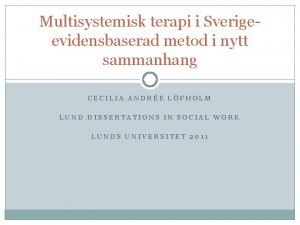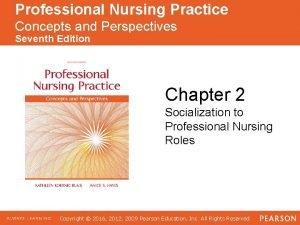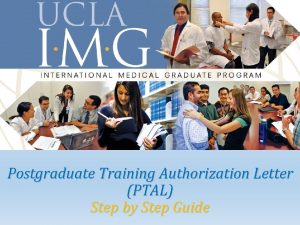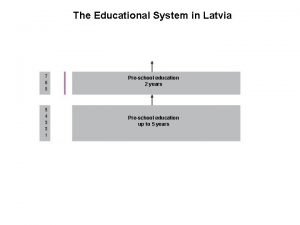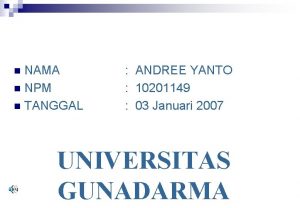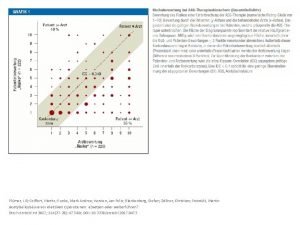Context Andree Woodcock Senior Research Fellow and Postgraduate











- Slides: 11

Context Andree Woodcock Senior Research Fellow and Postgraduate Tutor CSAD A. Woodcock@coventry. ac. uk

Why this conference…. Now? I’ve been working in this field for a number of years International interest – Latvia, US, NZ, Columbia, Japan Lot of research out there Back pain and furniture, children designing their workstations Suing of schools by children and parents for failing to provide adequate design Lot we do not know – and it is frightening Especially IT and long term effects on health Two grants – one by Cov uni looking at schools from a childs perspective AHRC funded project – development of polysensory environments for autistic children Cov schools have instances of best practice – need to make these visible

What I hope to achieve? Start a community that can discuss these issues Create a centre for educational ergonomics Set a precedence for future conferences with multistakeholder attendance

Ergonomics Putting the user at the centre of the design of systems, products and organisations Anything should be fit for purpose it was intended Where this does not occur end up with unusable products eg phones for the elderly, video recorders, cars, unintelligible products For organisations, low productivity, low morale, high staff turnaround and stress Designing for most vulnerable/extremes improves design for all

Indicators of teacher morale 38% of head teachers absences are attributable to stress Estimated annual cost of stress related absence is £ 19 m Or £ 40 000 per school Length is 6 weeks adding to staffing pressures factors relating to workload, long working hours, poor status and pay, role overload, evaluation apprehension and systemic factors such as lack of government support, lack of information about change, constant change and the demands of the National Curriculum Out of 100 who train, 40 leave, 15 move into another branch of teaching, 10 leave after 3 years Cross cultural studies indicate that this need not be the case

Students - truancy £ 1 billion is being spent on truancy 700, 000 skip school lessons every year Truancy runs between 4 and 48% Coventry around 7 -9%

Students - bullying 50, 000 educated at home Most cite the LEAs failure as a reason Expected to rise 500, 000 by 2010 One child attempts suicide every half an hour (19, 000 a year) 2 million see their GP for emotional and psychological counselling

Schools buildings - arson 1 in 8 schools suffer arson attacks each year 2/3 rds are by offenders aged 10 -14 years Costs nearly £ 100 million a year This could be cut by 90% if sprinklers were installed Sprinklers would cost 1. 8% of total building costs

What can ergonomics offer A framework for piecing together the areas Not just the design of schools, the role of schools, the teachers, the national curriculum or the child - Combination of factors Methods and techniques

Educational Ergonomics (Smith, 2003) • • • Ability to learn And ability to teach • • Personal factors – Native language, health status, nutrition Community and family factors – Poverty level, supervision, involvement, school choice, school distance, peers Class design – Size, length, start time, number, breaks, grade mix, day and year length Classroom buildings/ergonomics – Computers, av, textbooks, facilities, resources, maintenance, housekeeping Organisational design and management – Rules and regulations, discipline, dress code, funding, conflict resolution Teaching – Training, workload, pedagogic style, learning theory Academic programme – Curriculum, standards, textbook choice, grading, testing

Micro and macro level • • Examples of what works well Examples of what has not worked so well Study of methods of engagement Engagement that informs practice and policy • Create a common language • Local, national and international level • Cross over with other disciplines
 Andrée lumière
Andrée lumière Cecilia andrée löfholm
Cecilia andrée löfholm Autochrome
Autochrome Difference between postgraduate and undergraduate
Difference between postgraduate and undergraduate Difference between postgraduate and undergraduate
Difference between postgraduate and undergraduate Kramer's postgraduate resocialization model stages
Kramer's postgraduate resocialization model stages Seoul university acceptance rate
Seoul university acceptance rate Postgraduate training authorization letter
Postgraduate training authorization letter Susi grant income limits
Susi grant income limits Clinical governance postgraduate
Clinical governance postgraduate Belarusian medical academy of postgraduate education
Belarusian medical academy of postgraduate education What is postgraduate
What is postgraduate

